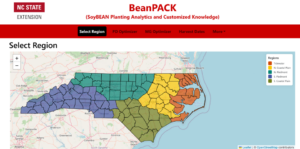
BeanPACK (2.0) Available
Our interdisciplinary team at NC State has been working on improving various aspects of BeanPACK, the dynamic grower decision support …


El inglés es el idioma de control de esta página. En la medida en que haya algún conflicto entre la traducción al inglés y la traducción, el inglés prevalece.
Al hacer clic en el enlace de traducción se activa un servicio de traducción gratuito para convertir la página al español. Al igual que con cualquier traducción por Internet, la conversión no es sensible al contexto y puede que no traduzca el texto en su significado original. NC State Extension no garantiza la exactitud del texto traducido. Por favor, tenga en cuenta que algunas aplicaciones y/o servicios pueden no funcionar como se espera cuando se traducen.
Inglês é o idioma de controle desta página. Na medida que haja algum conflito entre o texto original em Inglês e a tradução, o Inglês prevalece.
Ao clicar no link de tradução, um serviço gratuito de tradução será ativado para converter a página para o Português. Como em qualquer tradução pela internet, a conversão não é sensivel ao contexto e pode não ocorrer a tradução para o significado orginal. O serviço de Extensão da Carolina do Norte (NC State Extension) não garante a exatidão do texto traduzido. Por favor, observe que algumas funções ou serviços podem não funcionar como esperado após a tradução.
English is the controlling language of this page. To the extent there is any conflict between the English text and the translation, English controls.
Clicking on the translation link activates a free translation service to convert the page to Spanish. As with any Internet translation, the conversion is not context-sensitive and may not translate the text to its original meaning. NC State Extension does not guarantee the accuracy of the translated text. Please note that some applications and/or services may not function as expected when translated.
Collapse ▲
Our interdisciplinary team at NC State has been working on improving various aspects of BeanPACK, the dynamic grower decision support …
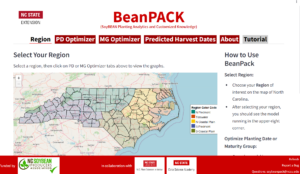
Our interdisciplinary team at NC State has been working on improving various aspects of BeanPACK, the dynamic grower decision …
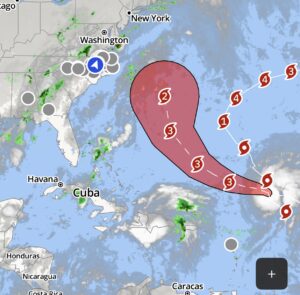
This is our least favorite subject to write about. Hopefully this is a wasted effort. Regardess, there remains quite …
There have been several questions lately about how to defoliate a drought stressed crop, and questions about appropriate tankmixtures …
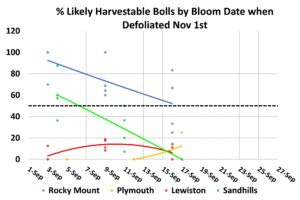
The 2025 NC Cotton Field Day was another huge success thanks to the support from our Industry Partners, as …
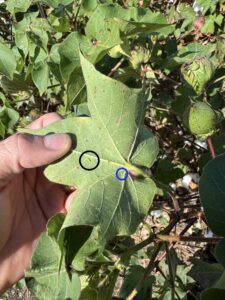
Recently we published information on a new invasive pest knocking on the door of North Carolina. Unfortunately this pest …

The National Cotton Council has scheduled several Farm Bill meetings in North Carolina during September. These meetings are open to …
The 2025 NC Cotton Field Day is only one week away, and we have full schedule of new research …

By Dominic Reisig and Guy Collins A new invasive insect, the cotton jassid (Amrasca biguttula or two-spot cotton leafhopper), has …
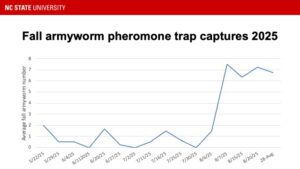
Light and pheromone traps are tools that help us know when certain insects are active in crops like cotton, …
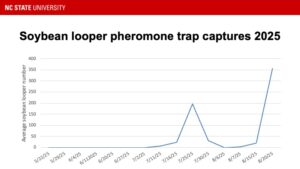
Light and pheromone traps are tools that help us know when certain insects are active in crops like cotton, …
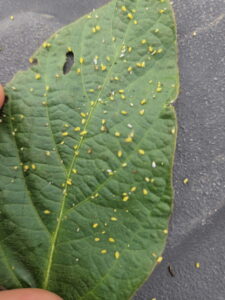
Soybean aphid has been more prevalent this year than normal, especially in eastern North Carolina. This is one of …
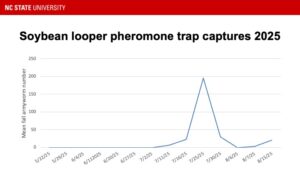
Light and pheromone traps are tools that help us know when certain insects are active in crops like cotton, …
The 2025 NC Cotton Field Day is now less than a month away, and we have full schedule of …
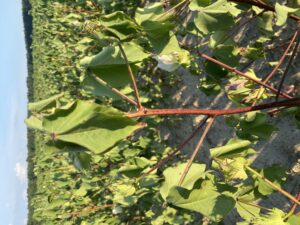
Several center pivots have been running over the last few days and rightfully so. With temperatures in the mid …
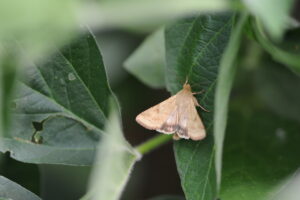
Corn earworm moth catches have been ticking up across the state this week, especially in southern counties of the …
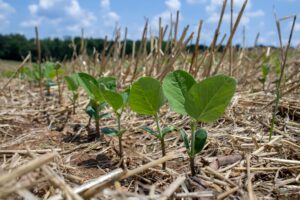
Wet weather across North Carolina delayed soybean planting into July and forced some growers to replant. Many now ask …
The 2025 NC Cotton Field Day is scheduled for Thursday, September 11th, 2025, at the Upper Coastal Plains Research …
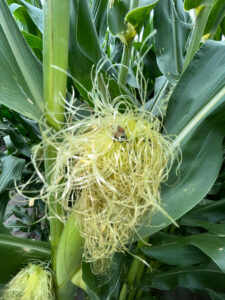
Current Situation in North Carolina Corn is currently at the tasseling and silking stages across the state, which is typically …

Authors: Igor Sulzbacher Schardong (NC State University), Dominic D. Reisig (NC State University), Berenice Romero (Louisiana State University), Jeff Davis, (Louisiana State …